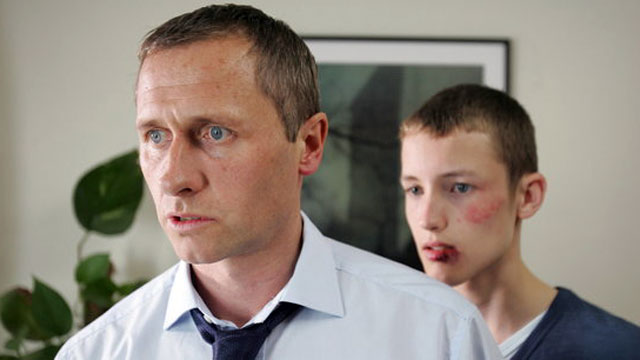Sherrif -
This is the character of Sheriff Ed Tom Bell played by Tommy Lee Jones. His character serves as the heart of No Country for old men, he portrays the typical western Sheriff with an implied compassionate nature and a respect for tradition and values. As a Sheriff he holds the law as a great importance, placing him into the default 'good guy' character archetype. This is expressed in the opening narration to the film 'I was sheriff of this county when I was twenty-five years old. Hard to believe. My grandfather was a lawman; father too.' Here Sheriff Bell provides slight context for his character, suggesting himself to be a very adept at his job due to receiving the position at a young age which suggests he's grown competent with age, something that is reflected on at the end of the play when he discusses his dreams which both revolve his father, implying he became a Sheriff due to his father's influence and is perhaps unsatisfied with the life he has lived as he hasn't had the chance to focus on his own personal aims instead of doing what was expected of him.
He is seen wanting and trying to help the characters in the play but unlike a normal Western where he would have succeeded, in the Neo-Western he appears to fail at every attempt; to protect Llewellyn Moss, to help Carla Jean and to capture Chigurh. His troubles grow in the film until he reaches the point where despite representing the law there are certain situations beyond it. This is time lined in the form of him jumping from saving a cat from a tree to a full blown investigation into Chigurh, which despite his best efforts is unable to catch up with. This is further referenced by his name 'Bell' which suggests when 'rung'/called he cannot help but do something about it as it is not only in his job description but in his nature as the character fully embodies what it means to be a Sheriff. Yet despite all this he isn't portrayed as a threat if Chigurh had seen him as one he would have taken him out or at least attempted to) which suggests that in certain situations such as this one, evil is able to overcome good but unlike neutral which can pick and choose relevant points from both both evil and good are restricted by their alignment.
Cowboy -
This is represented by the character of Llewellyn Moss who is intended to follow the traditional hero narrative but destroys it by stealing money from drug dealers changing the course of his otherwise implied mundane life and setting in motion the events of the film. Yet unlike the majority of western hero's Llewellyn fails and his failure transcends to the people within his life and others affected by his actions. Despite this the character is presented as a good man, showing that he is the sole provider for his wife and himself as well as being a war veteran, his sniper past allows the audience to at least fantasise that he stands a chance against Chigurh but unfortunately due to his greed he ironically doesn't even get to enjoy the funds he illegally procured and ends up abandoning hiss wife in order to save said funds. The death of this character is brushed over quickly in the film, not depicting his death but revealing it in the scene after without showing the audience creating an anti-climax effect and a sense of frustration. This is potentially done to show that in death everything and everyone is rendered meaningless, characters are killed off throughout the film but audiences tend to feel emotional disconnect from this as we are not informed of background characters names, or personal details before their deaths so it is a struggle to empathise with them; by killing Llewellyn in this way it renders him in the same position as everyone who'd died before in the film which allows the audience to see it from Chigurh's POV similarly as he views deaths as just another body because on a basic level, that's all it is.
Hired Gun -
Lastly Anton Chigurh represents all that is evil in No Country for Old Men, his very name sounding dark and foreign, unlike the other characters who mesh well with the surroundings. Chigurh exudes his evil through his shadow-like manner of dress, stoic gaze and chilling voice he is akin to a missionary of death. He has a set of rules he follows, it is not made clear the origin of these rules but when he breaks them he is shown to lose some of his supernatural aura and appear somewhat human. "There's no power in the coin, it's just you."










